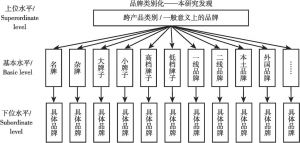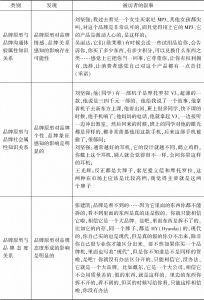章节
重新理解品牌认知模式与品牌效应发生机制
关键词
作者
蒋廉雄 ,管理学博士,中山大学国际金融学院教授,博士生导师,美国北卡罗来纳大学(UNCatChapelHill)凯南—弗拉格勒商学院访问学者。长期从事品牌化战略的基础理论问题和重大现实问题研究。承担过多个国家、教育部和省级品牌研究课题。研究论文发表在《管理世界》等重要期刊上。研究成果先后获得教育部高等学校科学研究优秀成果奖(2009)和广东省哲学社会科学优秀成果奖(2015)。为宝洁公司、安利公司、BP公司、强生公司、丰田汽车、中国移动、中国电信、联想电脑、美的、东方通信、TCL、王老吉等企业提供过研究和咨询服务,是罐装凉茶饮料王老吉“预防上火”品牌定位的研究者和提出者。
检索正文关键字
章节目录
- 一 引言
-
二 概念基础
- (一)关于品牌和消费者的研究假定
- (二)驱动品牌认知和选择的社会知识表征
- 1.知识表征与品牌的类别化
- 2.概念与消费者品牌概念的形成
- (三)认知策略与品牌评价模式
- (四)品牌认知与品牌知识结构
-
三 研究方法
- (一)访谈方法
- (二)分析方法
-
四 研究发现
- (一)品牌原型作为品牌整体认知的一般性概念
- 1.品牌原型与品牌类别化
- 2.品牌原型的意义结构
- 3.品牌原型的形成
- (二)品牌原型的运用及形成过程
- 1.个案一:被访者李惠贤
- 2.个案二:被访者王光辉
- 3.个案三:被访者向曼
- 4.个案四:被访者刘坚强
- (三)品牌原型的作用机制
- 1.优先性的品牌类别化认知策略
- 2.品牌原型驱动的品牌类别化
- 3.基于品牌原型的类别化对品牌评价的影响
- (四)总结
- 1.基于品牌原型的品牌认知模式
- 2.品牌认知模式与品牌效应发生机制
- (一)品牌原型作为品牌整体认知的一般性概念
-
五 讨论
- (一)品牌知识理论的发展
- 1.品牌类别化的形成与思维方式
- 2.品牌原型的意义建构与思维方式
- 3.品牌原型的意义建构与文化价值观
- (二)对品牌化理论发展的主要贡献
- 1.提出了“认知-属性”研究范式一直未能解决的品牌概念的发展问题
- 2.为弥补品牌化分析中的不完整性问题提供了理论来源
- 3.为现有的消费者品牌认知的各种概念提供整合的基础
- 4.为超越产品类别水平的品牌研究提供了启发
- (三)管理启示
- 1.重新理解品牌的本质,寻求新的品牌化战略模式
- 2.思考营销要回到根本的问题
- 3.选择更优的品牌化战略方向
- 4.超越依赖广告这一传统的营销策略开展品牌营销创新,提升品牌效应
- (一)品牌知识理论的发展
查看更多>>>









